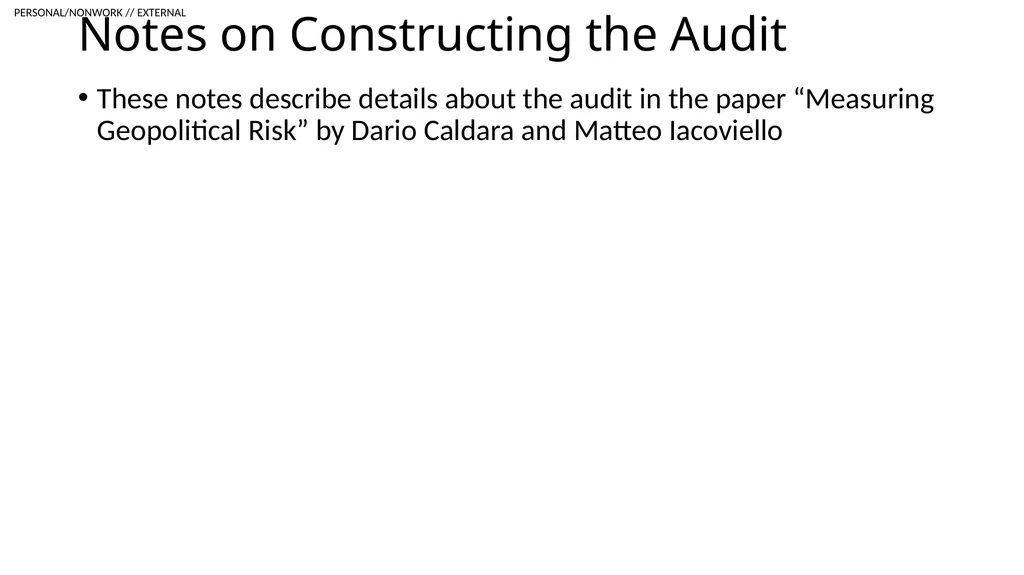
Notes on Constructing the Audit These notes
Author: celsa-spraggs | Published: 2025-07-16
Description: Notes on Constructing the Audit These notes describe details about the audit in the paper Measuring Geopolitical Risk by Dario Caldara and Matteo Iacoviello Construction of the Index Each month the universe of newspapers that we use to
Download Presentation
Download the PPT/PDF: Download
Transcript:
Loading transcript…